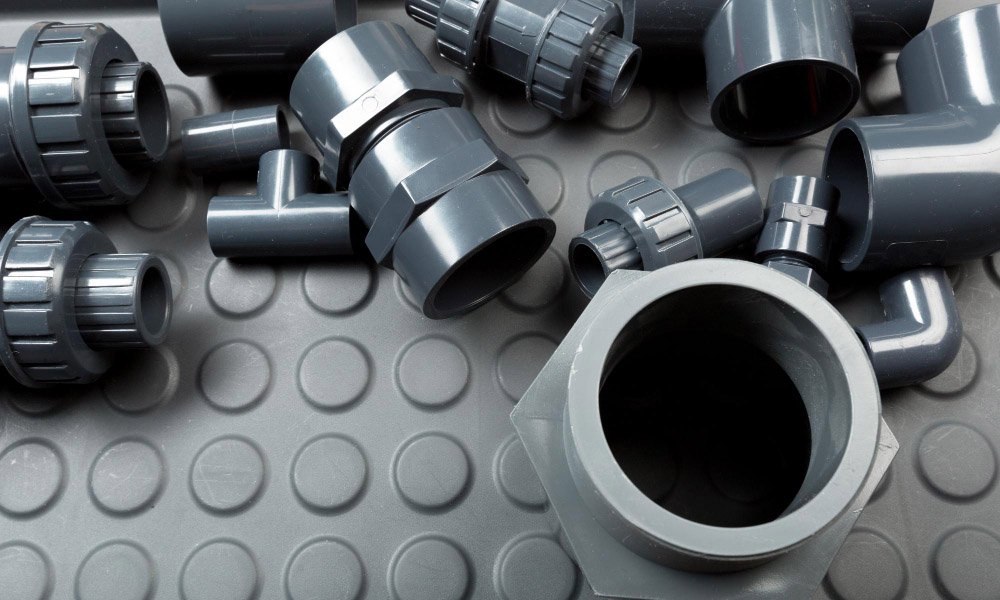In industries where durability, safety, and efficiency are essential, stainless steel pipe fittings play an irreplaceable role. They are used to connect, control, and redirect the flow of liquids, gases, and other materials in pipelines. Whether in oil and gas, chemical processing, food production, or construction, Stainless Steel Pipe Fittings are valued for their corrosion resistance, strength, and versatility. Understanding their different types and functions helps industries select the right fittings for their operations, ensuring both safety and long-term performance.
Why Stainless Steel is Preferred:
Stainless steel has long been the material of choice for pipe fittings because of its unique properties. Unlike regular steel, it contains chromium, which forms a protective oxide layer that resists rust and corrosion. This makes it suitable for demanding environments such as marine, chemical plants, and high-pressure systems. In addition to durability, stainless steel provides excellent temperature resistance, hygiene, and low maintenance needs, making it ideal for industries where both safety and efficiency are priorities.
Common Types of Stainless Steel Pipe Fittings:
Pipe fittings come in many shapes and sizes, each designed for specific applications. Here are the most widely used types:
1. Elbows:
Elbows are used to change the direction of flow, usually at 45° or 90°. They are essential in almost every pipeline, enabling fluid to move smoothly around obstacles. Stainless steel elbows are especially important in industries requiring durability under high pressure and temperature.
2. Tees:
Tees allow branching of a pipeline into two directions. Available in equal or reducing sizes, they are widely used in water treatment, chemical plants, and fuel pipelines where multiple flow directions are required.
3. Reducers
Reducers connect pipes of different diameters, ensuring smooth transitions in flow and pressure. They are crucial in optimizing system efficiency, preventing turbulence, and protecting pumps and valves.
4. Couplings
Couplings are small fittings used to connect two pipes together. Stainless steel couplings are known for their leak-proof strength, especially in high-pressure environments.
5. Caps and Plugs
Caps close the end of a pipeline, while plugs seal pipe openings. They are often used during maintenance or in systems where certain sections must remain sealed until needed.
6. Crosses
Cross fittings connect four pipes together at right angles. They are less common but extremely useful in complex distribution networks such as fire sprinkler systems.
7. Unions
Unlike couplings, unions are designed for easy disconnection without cutting the pipe. They are especially useful in systems requiring regular maintenance or inspection.
8. Valves and Specialty Fittings
Valves, though not always considered fittings, play an essential role in regulating flow. Stainless steel check valves, gate valves, and ball valves ensure controlled operations in industries dealing with high-pressure fluids or corrosive chemicals.
Functions of Stainless Steel Pipe Fittings
The role of pipe fittings goes beyond simple connections. Their functions can be divided into the following key categories:
- Connection: Joining pipes together, whether of equal or different diameters.
- Direction: Changing the flow direction within the pipeline.
- Control: Regulating or stopping flow using valves and specialized fittings.
- Adaptation: Connecting pipes made of different materials or with varying diameters.
- Sealing: Closing off pipeline ends for safety or maintenance.
- Distribution: Splitting one flow into multiple streams or combining several flows into one.
These functions make pipe fittings indispensable across industries that rely on fluid or gas transportation.
Applications Across Industries
Stainless steel pipe fittings are used in a wide range of industries:
- Oil & Gas: For transporting crude oil, natural gas, and refined products under high pressure.
- Chemical Processing: Resistant to corrosion from aggressive chemicals and acids.
- Food & Beverage: Maintaining hygiene and preventing contamination in production lines.
- Pharmaceuticals: Used in sterile environments requiring high purity.
- Water Treatment: For clean water distribution and wastewater management.
- Construction & HVAC: Ensuring safe fluid flow in heating, ventilation, and cooling systems.
Their reliability and performance in critical applications make stainless steel fittings an investment in safety and efficiency.
Choosing the Right Supplier
While the type of fitting is important, the quality of manufacturing plays an equally crucial role. Inferior fittings can lead to leaks, contamination, or system failures. That’s why choosing trusted suppliers like YASCO ensures that businesses receive fittings designed and tested to meet international standards. YASCO specializes in stainless steel fittings built for durability, precision, and global industrial needs.
Final Thoughts:
Stainless steel pipe fittings may appear to be small components, but their role in ensuring the efficiency, safety, and reliability of pipelines is enormous. From elbows and reducers to valves and unions, each fitting is designed to perform a unique function. By choosing the right type and ensuring high-quality manufacturing, industries can maximize system performance and reduce costly downtime.
As industries continue to demand higher safety and efficiency standards, stainless steel fittings will remain a cornerstone of modern infrastructure and industrial systems.

 News3 months ago
News3 months ago
 Health2 years ago
Health2 years ago
 Technology2 years ago
Technology2 years ago
 Celebrity2 years ago
Celebrity2 years ago

















